Home rose: growing, care, pest control
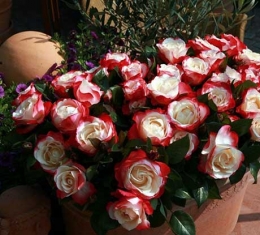
Not every city resident has the opportunity to grow roses in natural conditions. And the love for these flowers has not dried up for a very long time. Therefore, a miniature copy of the queen of flowers is becoming increasingly popular.
Content:
- Types of roses suitable for growing in flowerpots
- Growing and replanting indoor roses
- Pest and disease control
Types of roses suitable for growing in flowerpots
Not every rose is suitable for growing in a confined space. These flowers have a very powerful root system and the lack of space in the soil caused by flowerpots can cause disease or death of the plant. At best, the rose will be a frail, sickly plant, and not a beauty with magnificent flowers.
Therefore, if you want to grow roses on a windowsill, you should remember that garden varieties are not suitable for this. Specially bred indoor roses differ from garden roses only in size.
The types of roses most often used in indoor floriculture are:
- Polyanthaceae
- Climbing
- Repairers
- Hybrid tea
All of them differ mainly in the size of the bush and buds, and the color scheme. It is rare for the flower size to exceed 4-5 centimeters in any of the above roses.
Growing and replanting indoor roses
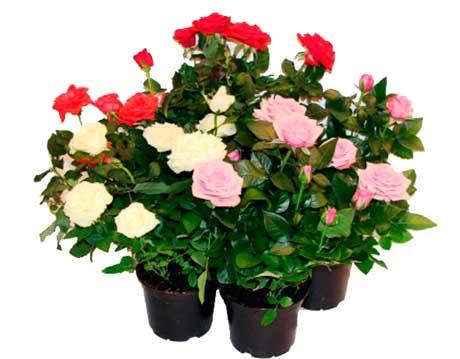
You can grow your favorite indoor rose variety from cuttings. This is the most effective type of reproduction for her. The principle of cuttings is identical to a garden rose.Most often, cuttings are planted in early spring, but branches pruned in late autumn can also be used. A cutting no more than 15 centimeters long with 3-4 buds is placed in water. After two weeks it takes root and can be transplanted into the ground.
If the flower was purchased in a store, you should not rush to replant it from an unsightly container. Rose is very vulnerable, you must first give it the opportunity to adapt to the conditions of the room where it will grow. After two to three weeks, if the plant feels comfortable and there are no signs of wilting or disease, it can be replanted.
The new flowerpot should not be much larger than the old one. Otherwise, the flower will begin to develop its root system according to its size and will completely forget about flowering. Experienced flower growers recommend taking a new flowerpot two fingers wider and higher than the old one.
The indoor rose is a rather delicate flower. In order for it to want to bloom, you must follow some rules in its care:
- Temperature. In summer, the suitable air temperature for the plant is about 20 degrees. Roses don't like warm winters. Feels comfortable if the room temperature is 8-10 degrees Celsius.
- Air humidity. Rose doesn't like dry air. It must be frequently sprayed with warm water, saturating the air around with moisture and oxygen. It is advisable to spray the leaves on both sides. In winter, when heating devices greatly reduce the moisture content in the air, the plant can be moistened several times a day. The main thing is that the water is not cold.
- Sun. Lack of sunlight can slow down the budding of a rose. Or it won't bloom at all. Therefore, the best place to place a rose in the house is a windowsill. It is advisable that the window faces east or southeast.During short daylight hours, the plant must be illuminated with fluorescent lamps. This is especially important in the spring, when the rose is actively starting to grow after hibernation.
- Fresh air. IN spring-summer period, when the air outside warms up enough, it is best to take the rose out onto the balcony or terrace. But roses don't like drafts. At any time of the year, care should be taken to ensure that the plant is protected from the slightest air movement. This is especially important in cold weather.
Basic requirements for caring for indoor roses

- Watering. Rose is a moisture-loving plant. Therefore, in the spring and summer, you should water it quite often, as the soil dries out. It is best to use melt or rain water for irrigation. Tap water should be left to stand for several days and the plant should only be watered with warm water. In winter, the frequency of watering should be reduced to 2-3 times a week, depending on the air humidity in the room.
- Drainage. To prevent the roots from rotting from excess moisture in the soil, it is necessary to take care of drainage when planting the plant. The thickness of the drainage layer must be at least one centimeter. If there is no hole in the bottom of the flowerpot, then it is necessary to pour 3-5 centimeters of drainage mixture. Expanded clay is suitable as drainage.
- The soil. Rose is very demanding on soil. If planted in unsuitable soil, it will stop growing and will not bloom. The best option for it is a soil mixture purchased at a specialized store. You need to take universal or specially prepared soil for roses. You should periodically loosen the soil to saturate it with oxygen.
- Fertilizer. Indoor roses must be fertilized regularly. At least once a week. You can alternate root and foliar feeding.Foliar feeding consists of spraying the leaves of the plant from a spray bottle with special nutrient mixtures.
- Transfer. Roses are transplanted very rarely in the autumn, using the transshipment method. A rose transplanted in spring will bloom no earlier than in a year. Its roots are very delicate and do not tolerate this kind of stress well. Therefore, this should be done in case of emergency. After transplantation, the plant must be given the opportunity to adapt - put in a dark place for a day or two. Feeding should begin a month after transshipment.
- Trimming. Indoor roses are pruned twice a year: in spring and autumn. In spring, faded leaves and flowers are cut off. Trimming fading buds in a timely manner will enable the plant to direct its energies to new flowers that have just appeared. This pruning will prolong the flowering of the rose bush. Autumn pruning is the removal of part of all branches. The remaining branches should have 4-5 buds. Necessary for the formation of a bush.
Pest and disease control
An indoor rose is no less susceptible to attack by pests than a garden rose. Its main enemy is the spider mite, the fight against which is very labor-intensive. Therefore, for prevention, the plant should be sprayed with a special solution. You can fight mites only with insecticidal preparations, which are sold in special stores.
Some rose lovers claim that garden ants successfully destroy mites on infested plants. It is enough just to place a flowerpot with a diseased plant near the anthill.
At improper care the rose may get sick. She also has her own immunity, like a person. Weakened by lack of sunlight or watering, depleted soil, it is unable to resist diseases.An indoor rose may develop gray mold or powdery mildew.
In this case, the leaves of the plant should be washed on both sides with a solution of baking soda in the proportion of two teaspoons per liter of warm water. During processing, the soil in the flowerpot should be covered with polyethylene. This procedure is continued several times until all the plaque on the leaves disappears.
Before buying an indoor rose, you should determine whether the microclimate in the house is suitable for it. Otherwise, with all the effort and feeding, the plant will not be able to fully please with its beauty and amazing aroma.
How to care for indoor roses, watch the video:
Interesting information about the vegetable garden

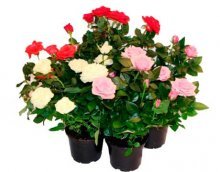



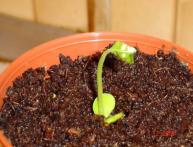


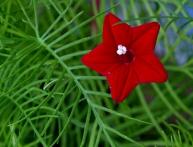


Comments
I seriously doubt that rose cuttings placed in water will take root in two weeks. On rose cuttings, callus forms first, and only then roots. The whole process will take much longer. Or am I not right? Please clarify.
On March 8th I was given a rose in a pot. Unfortunately, it was not possible to save it. During the spring and summer everything was fine, the rose grew and bloomed. But with the arrival of autumn she died. It’s not clear what the reason is, I trimmed it and looked after it, and put it in the brightest place. But I want to try again to buy a homemade rose, maybe I can grow one.
I had a rose, but unfortunately it died. The reason was spider mites. Sprayed with Agrovertin. But she couldn’t save the flower.